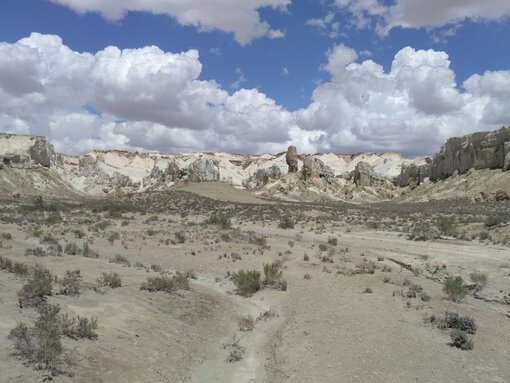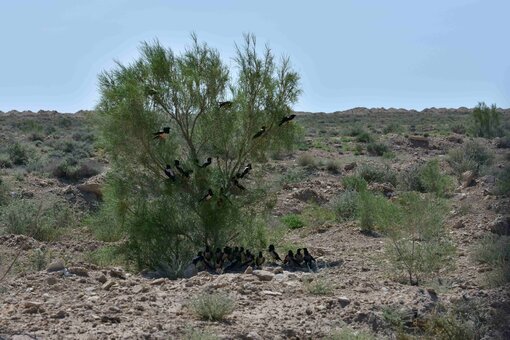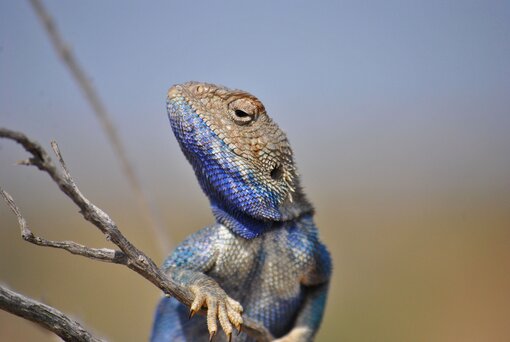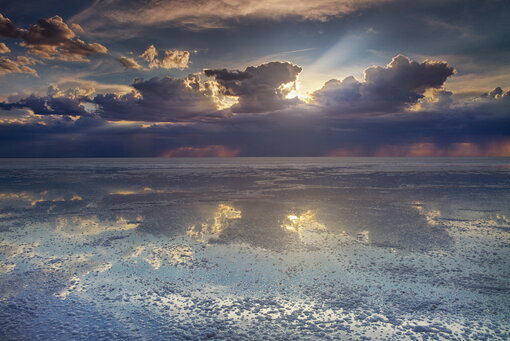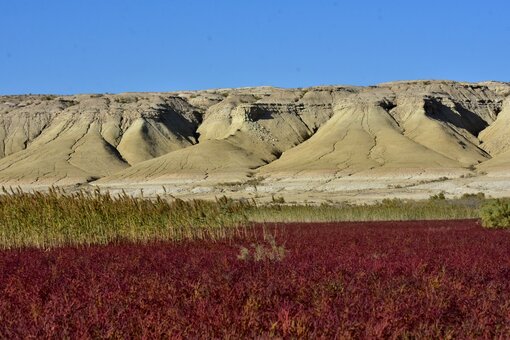The recommendation marks a critical milestone in the conservation of over 3 million hectares of cold winter deserts of Central Asia. The transnational site recommended for inscription includes 10 components in six protestier areas on the territory of Kazakhstan, Turkmenistan, and Uzbekistan. To assess the state of the sites, IUCN conducted on-site evaluations in autumn 2022.
In its technical evaluation, the IUCN affirms the „Outstanding Universal Value (OUV)“ of the nominated property, which justifies its inscription as a World Heritage Site.
According to the technical evaluation, the property’s ten component parts are representative of the Turanian cold winter deserts and include the most intact examples of desert ecosystems within legally protected areas.
The serial property represents the cold winter deserts as an outstanding example of the development of terrestrial ecosystems in extreme climate conditions and of the evolution of survival and adaptation strategies of plants and animals as ongoing ecological and biological processes. In addition, the property hosts very specific and diverse flora and fauna whose conservation is of global importance.
Emphasis was placed on the importance of the cold winter deserts of Turan as habitat for globally threatened mammals, such as Goitered Gazelle, Kulan, Saiga, and Urial. Unique are also the region's extensive saxaul woodlands, which are an important CO2 sink and thus play a major role in combating global climate change.
The recommended inscription would close a gap, as the cold winter deserts are currently the only biome in the world without a single World Heritage Site.
![[Translate to EN:] Banner Stiftung](/fileadmin/_processed_/b/c/csm_banner-stiftung_fee6c1c492.jpg)
